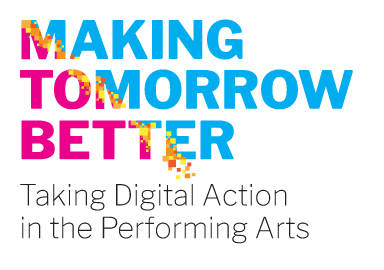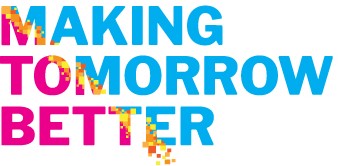Accessibility and Inclusion: Creating Better Conference Experiences for More People More Often
By Inga Petri (Strategic Moves/ [email protected]) with Lynn Feasey (Points North Creative), Jason Guille (Stream of Consciousness) and Felicity Buckell, October 2020
As an online conference organizer you have an awesome opportunity to create something far better than what we are accustomed to in the physical world.
The importance of paying attention to ensuring accessibility and inclusion for your conference or event is not unique to the digital world. What is unique, are the ways in which we can use technology to increase our efforts in ways that simply aren’t possible, prioritized or affordable when hosting face-to-face events.
This article offers leading experiments and best practices to thoughtfully use digital technology to minimize barriers to attendance and participation while furthering inclusion of a great diversity of backgrounds, experiences, and viewpoints from equity-seeking groups.
Going online, you’ll find that you can reach new heights of participation not only terms of broadening the diversity of your active audience, but also the depth of their engagement. The digital realm is an opportunity to set the stage for greater equality and equity; it is a chance to put into action the values we hold about how we’d like our world to be.
In Canada, the following are generally recognized as equity-seeking groups:
- Indigenous, Black and other People of Colour
- Persons with disabilities
- Lesbian, Gay, Bisexual Trans, Queer, Intersex, Two Spirit
- Women
PDF Series
- Fundamentals of Great Online Conferences: A Practitioner’s Perspective on Design and Technology
- Streaming Technology Equipment Kit for Speakers
- Online Conferences: Essential Tips for Speakers Or How to Achieve True Participation and Learning Online
- Online Conferences Thrive on Attendees’ Participation: From ‘Attendee’ to ‘Participant’ in 7 steps
- Accessibility and Inclusion: Creating Better Online Conference Experiences for More People More Often
- Financial Considerations of Online Conferences: Cost Drivers and Revenue Streams
CASE STUDIES
The Digital Divide is Real
As reported in High-Speed Access for All: Canada’s Connectivity Strategy, “Canada faces a national connectivity gap. Rural Canadians face the daily challenge of slower, less reliable Internet access than those in urban centres.” Further, rural and remote Internet service tends to be much more expensive for much lower levels of service than is offered in Canada’s urban areas. Although efforts are being made to reduce this divide, 2017 reports indicated that only 37% of rural households, and 24% of households in Indigenous communities, had sufficient speed to access internet functions often taken for granted by those in urban centres, including high definition videos and the majority of cloud-based software applications.
This is a difficult barrier to navigate; in fact, the reality is that some folks just won’t be able to attend your online event. But do make efforts to show your awareness of the issue, such as offering options for calling in, and providing documentation and content in advance, perhaps even by mail, and video links for downloading prior to the event.
When you are including rural and remote Canadians make sure your speakers are aware of ways in which they can present using tools that are light on download.
Also, quite often it helps to improve the overall experience to ask participants to turn off their screens for those times when rural Internet connectivity fluctuates.
The other obvious barrier affect anyone without access to the Internet due to economic and financial factors. For some online conference organizers it may be possible to create communal access points to boost participation among these groups of people.
Live Transcription
There are two basic options to allow users to read along the spoken content presented:
- A person can be assigned with the task to Close Caption the meeting as it unfolds. This is an existing function within Zoom, for instance.
- An AI-based application, likeai can be seamlessly integrated with Zoom, for instance, to create a live machine-generated transcription. Otter.ai allows for some training of the application to aid with more reliable recognition of technical language or names, for instance.
The AI-based live transcription will have some error rate, but in our experience it is a useful tool despite those errors. Errors can also be generated by the human close captioning provider; the reduce errors due to fatigue it is advised to use a team of people to provide this function when it is essential.
Should a speaker’s presentation be available as a complete written text in advance that can be used within the live meeting to provide closed captioning as well.
Sign Language Interpretation
Hiring a sign language interpreter allows people with hearing impairments to participate. The sign language interpreter can work in both directions: signing the speakers, as well as verbalizing the signed comments from hearing-impaired participants. Those requiring interpretation can pin the Interpreter to appear in the main window of the video platform they use.
Respect for Diversity
Being mindful of the power imbalances to that exist for groups from different cultural and racial backgrounds is important in designing your online conference or event. Moving beyond tokenism and lip-service is an opportunity online conferences and events can seize.
Organizers, hosts and speakers should be mindful that the current terminology of BIPOC or IBPOC can make it appear as if the barriers are the same for Indigenous, Black and People of Colour. While there are shared aspects, they each have their own contexts and a more nuanced understanding among conference staff and speakers should be fostered. Some actions you can take no matter the context of your online conference or event include:
-
Land Acknowledgement
Any online meeting takes place with people who live, work and play on Indigenous territories in Canada. Therefore, at minimum a meaningful land acknowledgement should be shared at the beginning of the proceedings.
-
Welcome ceremony
Should it be possible to have a local Indigenous elder join the proceedings you can ask them to provide a welcoming ceremony or offer words of guidance for the online conference or event. Elders are paid or given an appropriate gift for their work in accordance with local Indigenous custom.
-
Authenticity
Although referring specifically to news reporting when visiting an Indigenous community, Duncan McCue’s note in Reporting in Indigenous Communities is a good general rule to follow: “Here’s the bottom-line on Indigenous customs and protocols: if you’re ever unsure about your interpretation of an Indigenous custom, or whether it’s appropriate to participate in, write about, or record, a ceremony, dance or song, ask your host.” This speaks to the ways in which mainstream society can appropriate the experiences, the stories of others and retell them for their own purposes, without regard for Indigenous and other equity seeking people.
-
Representation
Hire hosts, speakers, moderators who are Indigenous, Black and People of Colour to speak on a wide range of topic and issues, not merely those related to race or equity.
-
Different modes of meeting and sharing
Be mindful of culturally specific methods of designing your online event. By way of a simplistic example, white mainstream culture tends to be comfortable with hierarchical events, where speakers are on a stage, act as experts and have the attention of attendees focused on them. In other cultural contexts, circles or roundtables that invite everyone’s expertise and give everyone explicit space to speak and contribute may be favoured. In short, using a variety of modes of presentation and sharing experiences in the online event design, enhances active participation, enables learning and enriches the online conference experience for all.
-
Speaking time
Pay attention to who speaks up and who doesn’t in the online conference sessions. When you find that primarily people generally identified with the white mainstream culture in Canada take up lots of space, work to create space to speak and be heard for people from a diversity of backgrounds. This should be done without asking people to speak because they are black and to offer a black perspective.
-
Be yourself – consciously
Don’t apologize for who you are. Instead simply be aware of your relative privilege and how you use it. Each of us has experiences to share and contributions to make. When we join an online conference or event we want the content, the learning, the networking.be aware that for instance, as a white person sharing in a diverse group about your discomfort or feelings of guilt for having privilege simply asks listeners from less privileged backgrounds to take care of you emotionally. As an Indigenous, Black or Person of Colour who is not white you don’t need to preface your remarks in any way to take care of the other listeners; you can simply make your comment, insight or contribution.
Multi-language Interpretation
Language barriers are one hurdle that may be somewhat easier to jump online than in person. For instance, Zoom, a popular video conferencing platform, has added a built-in simultaneous interpretation function, with nine default and up to five custom languages. Attendees can select the audio channel with the language of choice, with the option to mute the original.
There are an increasing number of cloud- and web-based online interpretation services available, 0ffering professional interpreters and promising ease of integration into your online event platform. Any AI-based automated translation services are not usually of sufficient professional quality, at this time, to be seriously considered.
Safe Spaces
Online conferences and events should develop and share their online harassment policies with attendees as part of the conference proceedings. Providing basic ground rules for online interaction and participation including standards related to language, stereotyping and discrimination sets expectations and aids in creating safe space. This type of policy should include a mechanism by which to flag any inappropriate behaviour to the organizers or hosts with pre-defined protocols for rapid response.
Safe space can be particularly difficult to achieve when an open meeting link has been shared and anyone can log on to an online event anonymously. When using registration processes that require actual email addresses to receive a link the odds of inappropriate behaviour and prejudicial or discriminatory language diminish in many cases.
Providing a facilitated ‘safe room’, or rooms, can be an effective way to reduce attendees simply leaving from your event. Instead whatever issue they encountered can be processed real time, and this may in the end nurture deeper dialogue, reflection and learning at least for the affected attendees and the host or organizer. Safe rooms should be set up so attendees can come and go from them at will and not have to be assigned to them. They should be regularly promoted and normalized.





